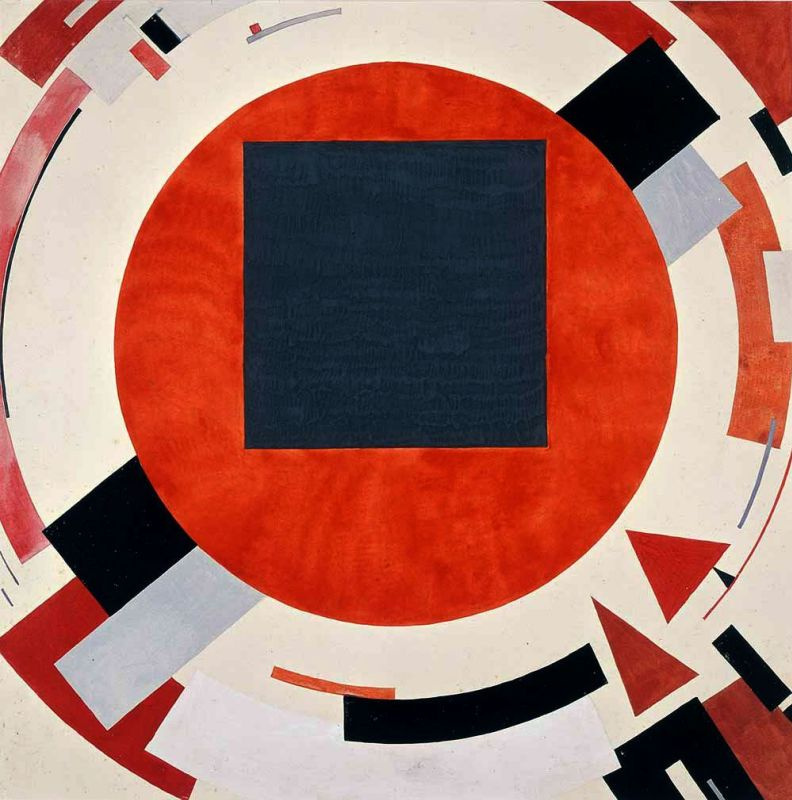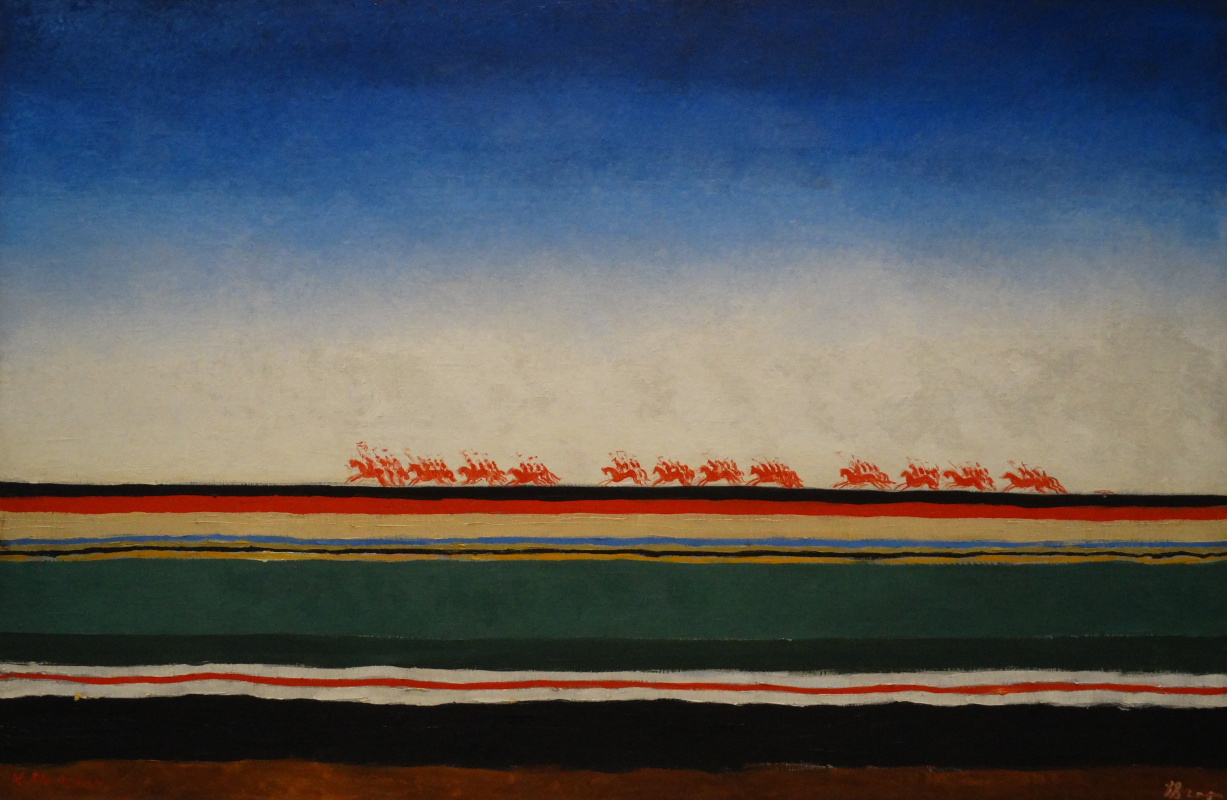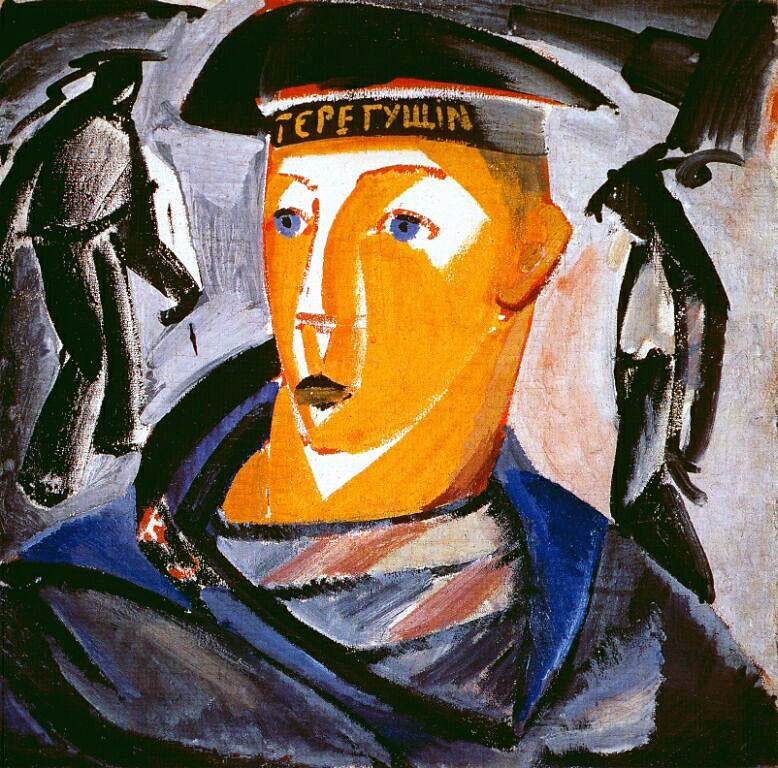Avant-garde is how modern art critics refer the general trend of new artistic directions that arose in world art at the turn of the 19th and 20th centuries. A very thin line separates it from the concept of "modernism".

The term came from the French word avant-garde, which means "advanced guard". For the first time this term as applied to the art movements was used for a long time — it was introduced into the concept list by the French journalist, critic and first historian of impressionism Théodore Duret in 1885.
Radiant landscape
1912, 71×94.5 cm
However, at that time the term did not gain much popularity, and, in fact, in the midst of the development of various artistic trends, which are now united by the concept of "avant-garde", this word was not used.
The avant-garde concept returned to the terminology of art connoisseurs in the 1950s thanks to a Frenchman, constructive artist Michel Seuphor, historian of abstractionism, who used the term to designate the disestablishing Russian art of the early 20th century.
The avant-garde concept returned to the terminology of art connoisseurs in the 1950s thanks to a Frenchman, constructive artist Michel Seuphor, historian of abstractionism, who used the term to designate the disestablishing Russian art of the early 20th century.
Red cavalry gallops
1932, 140×91 cm
Historians note that the definition of "avant-garde" was then more related to political ideas advocated by the utopians and anarchists. The radicalism of these political movements was clearly expressed in the artistic environment. In his article on the opening of the exhibition of the Union of Russian Artists in 1910, Alexander Benois highlighted several artists who worked in Moscow, headed by Mikhail Larionov, calling their art avant-garde. Benois believed that this group of artists was too provocative in denying the generally accepted classical painting dogmas, while he considered himself, as well as his associates from the Mir Iskusstva centrists. However, the term "avant-garde" was not yet firmly established: creative associations of artists did not use it in any way, therefore critics did not use it either.
Forest. Red-green
1914
Further on different interpretations appeared. The "avant-garde" in common practice began to be identified with modernism, and the "Russian avant-garde" became a separate trend. Be that as it may, in fact, the term "avant-garde" at the time of its "second birth" and active use was already a retrospective concept adopted after the latest trends in art, which appeared in the early 20th century, survived their peak popularity and mostly became a historical fact.
The sun
1916, 455×780 cm
The avant-garde movements
The avant-garde movements include:Expressionism
Arisen as a response to the worries of the revolutions and horrors of World War I, expressionism refracted objective reality through the frustration and fears of people in time of trouble. The expressionist artists concentrated on the emotional subjective component of the work, which the painter sought to convey to his/her viewer.
Scream
1910, 83.5×60 cm
Cubism
Another trend that denied the classical principles of painting was cubism. Artists of this direction used simple geometric shapes to depict three-dimensional objects, creating a two-dimensional object on canvas. The founder of cubism was Paul Cézanne, Georges Braque worked in this style, but it was Pablo Picasso who brought the greatest fame to this art movement; the collector Sergei Schukin brought his works to Russia. Kazimir Malevich and Vladimir Tatlin transformed cubism, combined it with futurism, and thus cubofuturism was born. Malevich wrote: "If you want to study art, then study cubism". But Natalya Goncharova claimed that there was nothing particularly new in cubism, holding up Scythian stone women and wooden painted toys as an example.
Friendship
1908
Futurism
This art movement arose in the 1910s. It relied on the future and on a constant movement. An integral components of futurism were not only the art objects, but also manifestations, programs, theories of views that were promoted by artists and poets. Art historians believe that futurism inherited the colour experiments of Fauvism and the artistic forms of Cubism. Speed, energy, a sense of movement, a portion of the absurd — all this can be found in the canvases of the futurists. Such avant-garde trends as constructivism and cubofuturism subsequently developed from futurism.
A self-portrait. Sailor
1911, 71.5×71.5 cm
Surrealism
Surrealists were the fans of the subconscious creative energy, who drew their subjects from dreams and hypnotic states. The surrealists used absurdity and denial of logic as a way to soar above the generally accepted values of the bourgeois public. Combining dream and reality, surrealist artists showed the world chaotic images, separating the spirit from the material world. Salvador Dalí even said: "Surrealism is me".Thus, the term "avant-garde" is a collective and historically determined definition of the latest art movements.
Avant-guard and modernism
The question of the semantic equality of the terms "avant-garde" and "modernism" is debatable, since modernism is defined as new forms of artistic thinking and relates to the same directions that are characteristic of the avant-garde — Expressionism , Fauvism , Surrealism, Dada, and Cubism. At the same time, it can be considered that modernism is a more capacious concept, since it also denotes earlier art movements — impressionism and post-impressionism , as well as later ones — the optical and kinetic direction in art. Both the avant-garde and modernism advocate the inner freedom of the artist who challenges the classical canons.
Beer
1916
Famous avant-garde artists: Edward Munch, Karl Schmidt-Rotluf, Emil Nolde, Umberto Boccioni, David Burliuk, Kazimir Malevich, Natalya Goncharova, Mikhail Larionov, Olga Rozanova, Alexandra Exter, Olga Popova, Nadezhda Udaltsova, El Lissitzky, Paul Cézanne, Georges Braque, Pablo Picasso, Salvador Dalí, Max Ernst, Óscar Domínguez.
Title illustration: El Lissitzky. Proun. 1923




















